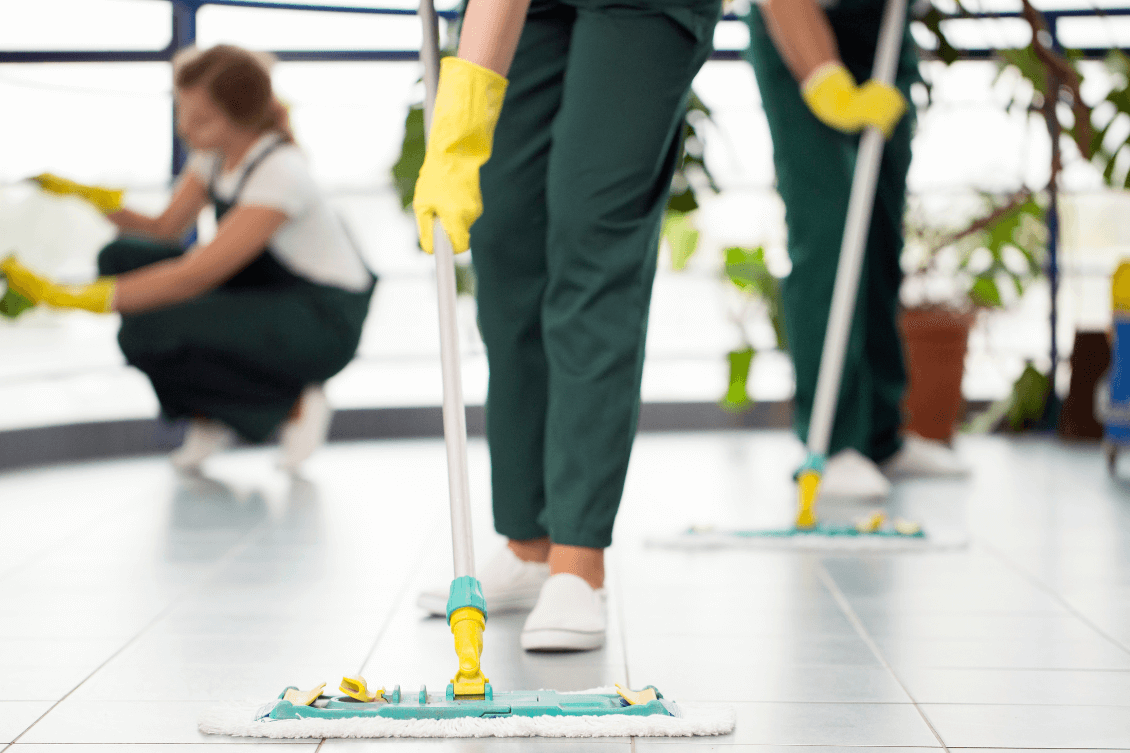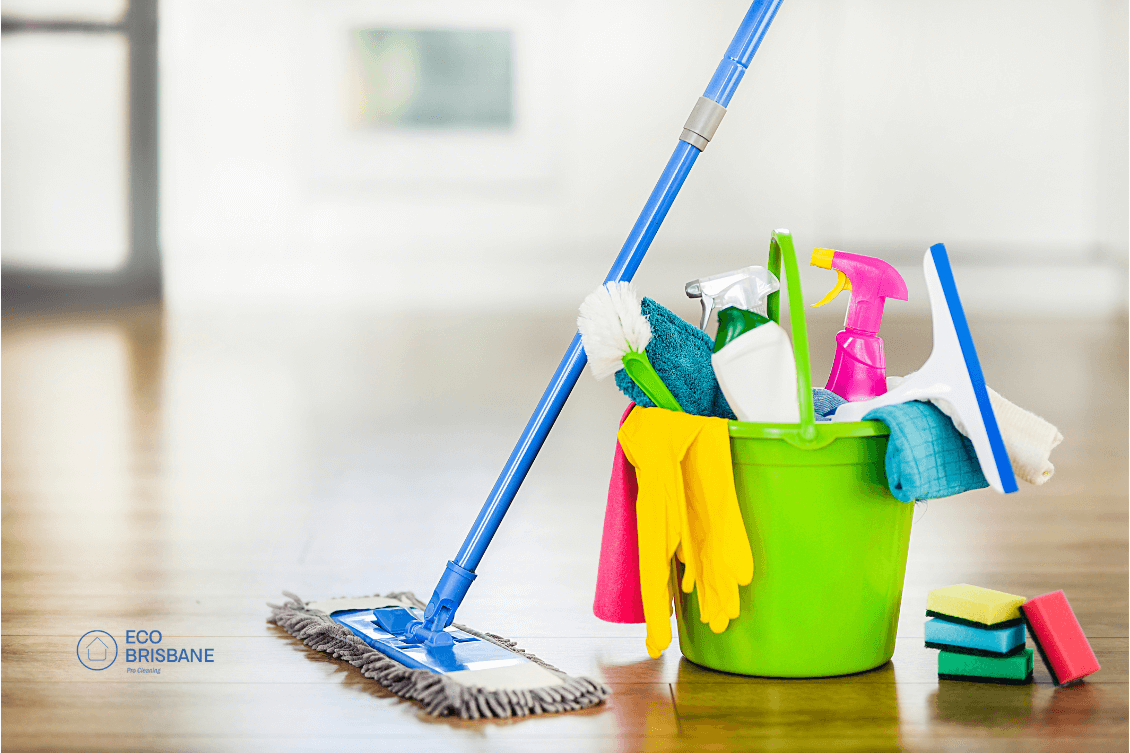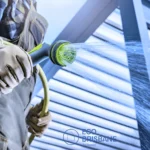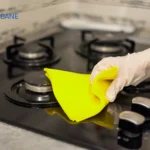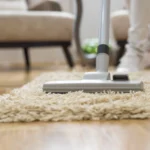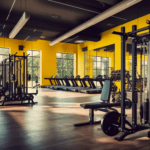Pressure cleaning comes in handy when cleaning building exteriors, fencing, driveways, patios, etc. It removes tough dirt and stains quickly. You can save both time and effort compared to manual cleaning. This may make you wonder how these pressure washers actually work. The science behind it is not too complicated, though. The high pressure of water breaks down and washes away unwanted substances from the surface. Water temperature, pressure, and kinetic energy play a crucial role in the cleaning process.
Table of Contents
Parts of a Pressure Washing Machine
A pressure washing machine has several key parts. You will understand the science better if you know these parts. The major components of pressure washers are:
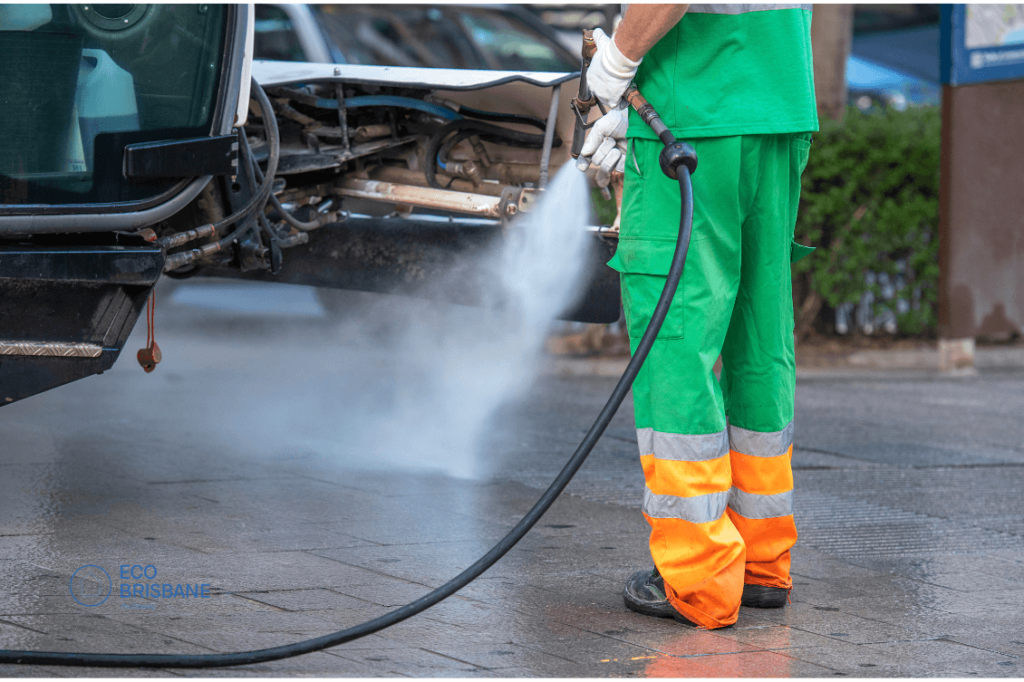
Power Generating Motor
The motor provides the necessary power needed to operate the pump. Motors can be electric or gas-powered. Electric motors are quieter and require less maintenance. They are ideal for small jobs and indoor use. Gas motors are more powerful and suitable for large outdoor tasks. They are noisier and need regular maintenance. The motor needs to be strong enough to generate high pressure.
Pressure Increasing Pump
The pump increases the water pressure. It is driven by the motor. There are three main types of pumps. They are wobble, axial cam, and triplex. Wobble pumps are affordable but less durable. Axial cam pumps are more reliable, while triplex are the best. Most professional cleaners use triplex pumps.
The pumps work using pistons or plungers. Most commercial triplex pumps have plungers, made of ceramics. The pump starts by drawing water from the source. The pistons or plungers move back and forth inside the pump chamber. The movement of the plungers causes a positive displacement. It forces water to compress and increase the pressure.
High-Pressure Hose
The hose connects the pressure washer to the water source. It must be strong to handle high-pressure water jets. A good hose improves cleaning efficiency. Longer hoses can reach distant areas. Durable materials prevent leaks and bursts. A quality hose ensures environmentally friendly cleaning. It often requires only water, reducing the need for chemicals.
Pressure Controlling Nozzle
The nozzle controls the spray pattern of the water. Different nozzles can change water pressure levels. The nozzles can be of various types, such as:
- 0-degree: Ideal for concrete and metal
- 15-degree: Ideal for concrete, metal, and siding.
- 25-degree: They are often coloured in green. These nozzles are good for dirt, concrete, and decks.
- 40-degree: This nozzle is best for use in car washing. It can maintain a maximum of 4000 PSI.
- Soap: These are specialised attachments. They can have up to 65 degrees of angle. The wide angle helps spread the soap evenly over large areas.
- Turbo: Combines high pressure of water with a rotating jet. The nozzle spins the water jet in a circular motion. This increases cleaning power.
Each type suits different surface cleaning techniques. A 0-degree nozzle has the highest pressure for tough stains. A 40-degree nozzle has a wider spray for gentle cleaning. Professional cleaners understand the uses of these tools and maintain pressure cleaning safety tips for the best results.
Trigger Gun for Pressure Control
The trigger gun controls the water flow. They are used in both residential pressure cleaning and commercial pressure washing. They are designed for comfort and safety. A good trigger gun reduces hand fatigue during long cleaning sessions. They often have safety locks to prevent accidental spraying.
How Does a Pressure Washer Work?
The pressure washing process follows several scientific laws. It combines fluid pressure, kinetic energy, turbulence, etc. Water temperature also plays a crucial role.
Creates A High Pressure
A pressure washer uses pressure washer mechanics to create high water pressure. It starts with a motor that powers the pump. The water flows through a hose to the nozzle. The pump works by using pistons to pressurise water. It forces the water through a narrow nozzle. This further increases velocity and pressure due to fluid dynamics principles. The pump increases water pressure by reducing the cross-sectional area. So, when the water is aimed at any surface, it hits the surface at a high pressure.
Kinetic Energy of Water
Kinetic energy is the energy an object has due to its motion. The energy depends on two things- mass and speed. Faster objects have more kinetic energy. Water is released at a high pressure. It generates a high kinetic energy in water. The kinetic energy of water is crucial for effective cleaning. When water is pressurised, it gains significant energy. Water velocity increases as the high-pressure water exits through the nozzle. This increase in velocity translates into kinetic energy. The energy breaks the bond between grime, dirt, and the surface.
You can adjust the pump to raise water pressure. The pressure increases water velocity and it increases the energy. The size of the nozzle also contributes to the speed and energy. According to Bernoulli’s principle, if water speed increases, the pressure decreases. So, if the nozzle is smaller in size, water pressure gets decreased. This makes the water come out at a higher speed and more energy. It enhances the washer’s cleaning efficiency.
Creates Turbulence to Remove Dirt
Pressure washers create turbulence to remove dirt through a combination of high PSI (pounds per square inch) and GPM (gallons per minute). Based on the machine, it can generate between 2000 and 4000 PSI. The high PSI forcefully hits surfaces to dislodge dirt and grime. The force of the water steam, velocity, and volume contribute to the cleaning action.
Water Temperature Improves Efficiency
Sometimes, hot water is used in power cleaning. It enhances the effectiveness of cleaning agents. This also speeds up the breakdown of dirt and grime. Hot water effectively dissolves grease and oil. This makes it easier to remove stubborn stains. It makes a high-pressure washer more suitable for cleaning furniture, carpets, etc. However, you should check and ensure that your items are suitable for pressure cleaning.
Adding Detergents for Pressure Cleaning
Pressure cleaning does not always need detergents. But it can enhance cleaning efficiency. If you need to clean tough and stubborn stains, cleaning solutions can give you better results. You may need to add detergents to remove grease, oil, mould, or mildew. Pressure washers usually need specialised cleaning solutions. The ideal detergent depends on what you need to clean. For floor washing, you may need to use a cleaning agent different from carpet cleaning.You can use vinegar, citric acid, and baking soda. These are natural cleaning solutions and are environment-friendly.
When Should You Use Pressure Washers?
You need pressure washers for deep cleaning of your properties. They are good for cleaning driveways, patios, decks, etc. They are ideal for removing deep-seated dirt, grime, and mould. Pressure washers are also effective in cleaning building walls, windows, and roofs. Kitchen windows and grills often become very messy and greasy. Pressure washers can clean them with less effort. It’s a much quicker process for cleaning them. If the driveway is dirty with bird droppings, you can benefit from pressure cleaning. You may also need pressure cleaning in an office environment. Regular cleaning methods often cannot remove the stains. Offices with high traffic can benefit from pressure washing.
DIY vs Professional High-Pressure Cleaning
Though the science of pressure cleaning is not too complicated, you should opt for professional cleaners. They know the proper manners of using the washers. For proper cleaning, the pressure needs to be controlled. Professionals know the correct pressure settings to avoid damage. They use high-quality cleaning solutions to remove tough stains.
Safety is another thing to consider. High pressure water can cause accidents and injuries. Professionals have the experience to handle equipment safety. They know what surfaces and materials are safe for pressure cleaning. This saves you from damaging surfaces and furniture.
Besides, professional cleaning companies have trained staff. They can clean hard-to-reach areas. They handle jobs like roof or ceiling cleaning without risking safety. Professional cleaners also ensure thorough cleaning. This enhances the appearance of your property.
Final Thought
High-pressure washers utilise different scientific rules. You can use the tool more efficiently when you understand the science behind this. It’s safe to let them be used by professional cleaners. If you need to use high-pressure washers, contact Eco Cleaning Brisbane. We have trained staff to use the equipment properly. Our eco-cleaning approach ensures damage-free cleaning of your property. Contact us for booking a power cleaning service in Brisbane.



